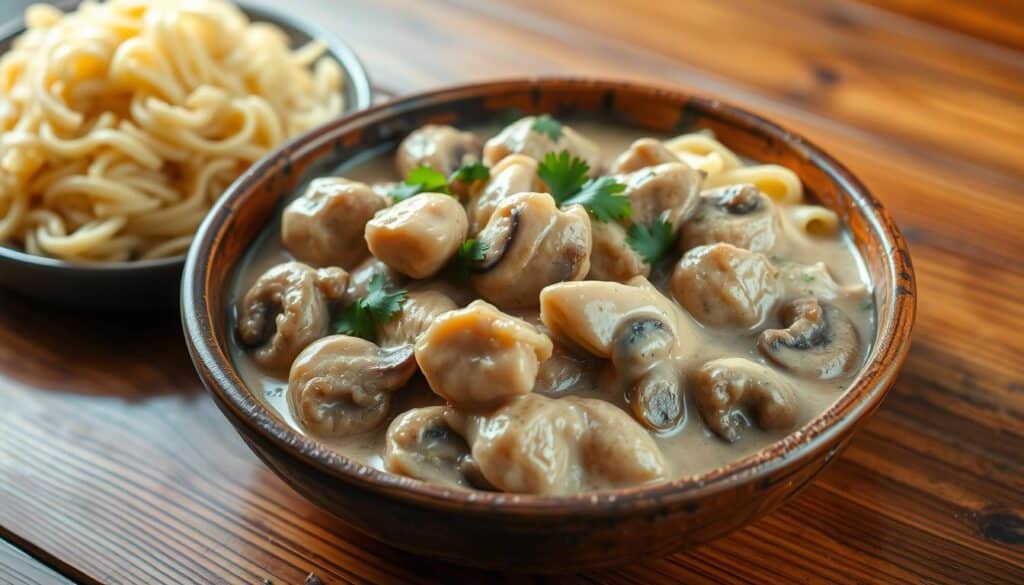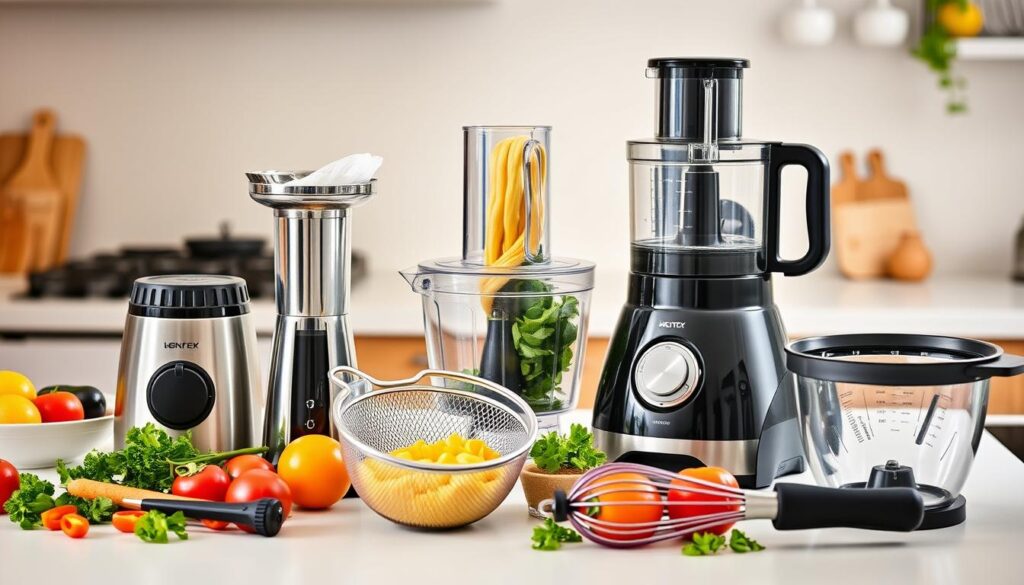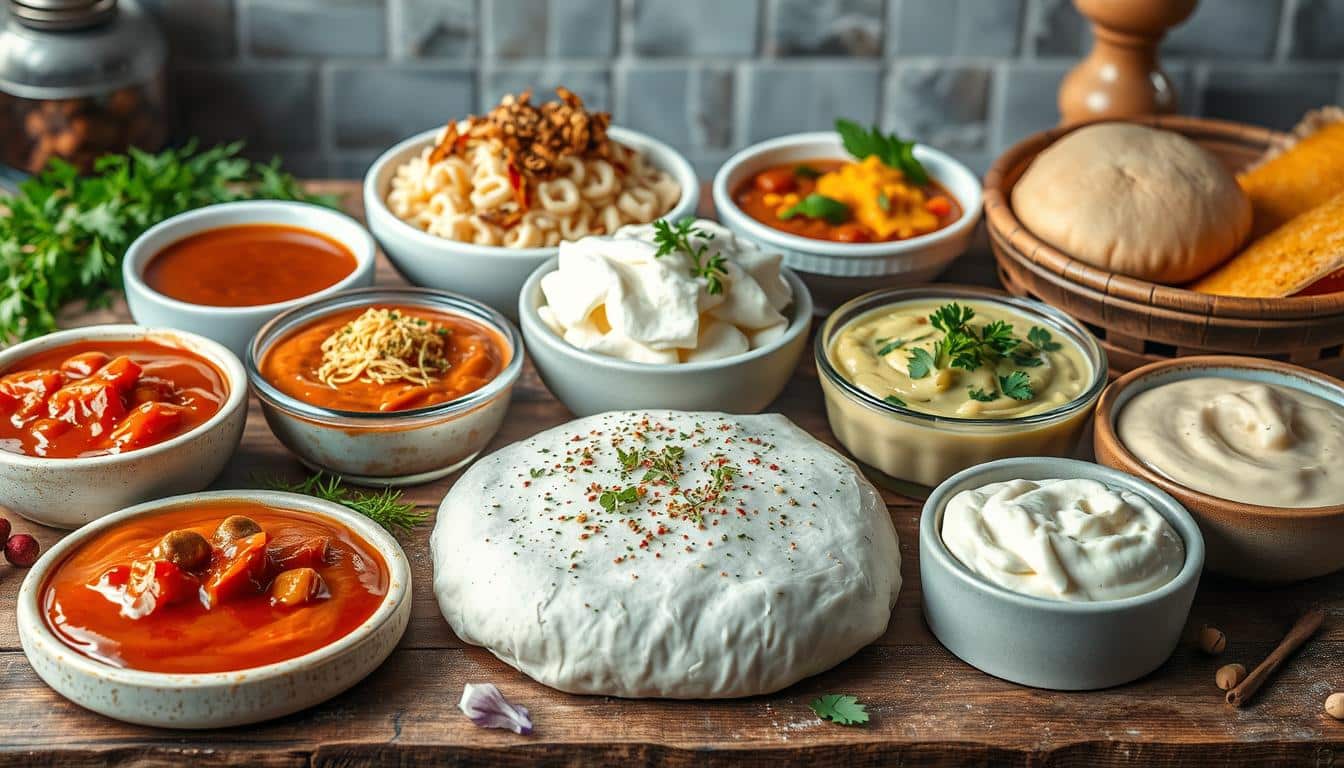The pandemic has made us all want homemade meals more than ever. We can’t go out to eat much anymore. So, we’re making food that’s tasty and good for us. Texturization is a big help in making these meals.
Texturization changes how ingredients feel and taste. It makes simple dishes taste like they’re from a fancy restaurant. For example, a microwave meat loaf can get a crispy crust. An avocado crab boat can be super creamy.For a luxurious breakfast option, explore our Ultimate Brioche French Toast Recipe, showcasing the magic of texture in every bite. View Recipe.
We’ll look at many recipes that use texturization. You’ll see how easy it is to make great food at home. Your family and friends will love it. Let’s start and make cooking more fun!
Key Takeaways
- Texturization is a key culinary technique for making meals better.
- Learning simple texturizing methods can make any dish special.
- Texturized food helps us make tasty, comforting meals at home.
- Recipes with texturization can spark creativity and new tastes.
- Adding texturization to your cooking can change how you make meals.
Learn more about the power of texturization in our detailed guide on making the perfect Brioche French Toast
Understanding Food Texturization in Modern Cooking
In the world of cooking, making food textures is key. We change how ingredients feel in our mouths. This makes food taste better and feel more exciting.
Think about the crunchy outside of fried foods or the smoothness of purees. Texture is what makes food special. For a hearty and textured dish, check out our Joan Nathan’s Classic Chickpea Soup Recipe, packed with flavor and depth. View Recipe.
Basic Principles of Food Texture Modification
Changing food textures starts with altering moisture and breaking down fibers. These steps are based on molecular gastronomy. They help us make ingredients more interesting and fun to eat.
Impact of Texturization on Flavor Enhancement
Texture affects how we taste food. Changing food’s texture can make flavors pop. This is thanks to the mix of food processing methods and sensory perception.
Common Texturizing Techniques
- Emulsification: Blending oil and water for a smooth mix.
- Gelation: Turning liquids into solids with gelling agents.
- Sous-vide cooking: Cooking slowly for tender textures.
- Spherification: Creating gel-like balls with liquids.
- Foaming: Adding air for light, airy textures.
These methods help chefs and scientists create amazing flavors and textures. They are the heart of modern culinary texturization.For refreshing pairings to complement textured meals, explore our Dessert & Juices Collection for creative ideas. View Recipes.
“Texture is the unsung hero of the culinary world, shaping our experience of flavor in profound and unexpected ways.”
Quick and Easy Food Recipe That Includes Texturize
Making a tasty dish that shows off ingredient change and new flavors is simple. We’ll make a delicious chicken stroganoff. It has a special texture that makes it even better.
This chicken stroganoff recipe serves 4 and takes only 30 minutes to make. It has 1 lb. of chicken, 12 oz. of mushrooms, and a small yellow onion. It’s quick to prepare, taking just 10 minutes.
The sauce is made with white wine, chicken stock, mushrooms, onions, garlic, and sour cream. Flour makes it thick and smooth. This is a true one-pot meal. It cooks pasta right with the other ingredients, making cleanup easy.
To make it look and taste even better, add parsley and black pepper. Use cremini mushrooms for a richer taste. You can also freeze it, but add dairy when you reheat for the best taste.
This recipe shows how easy it is to make a great meal. It’s all about changing ingredients and trying new things. Enjoy the tasty textures and flavors of this dish. It’s a one-pot wonder that makes cooking easier.
| Nutrition Facts | Value |
|---|---|
| Calories | 471 per serving |
| Cooking Time | 30 minutes total |
| Servings | 4 |

“This TRUE one-pot meal allows the pasta to cook directly in the same pot as the other ingredients, minimizing dishwashing load and delivering a truly convenient culinary experience.”
Essential Kitchen Tools for Texture Transformation
The right kitchen tools can turn a simple dish into a masterpiece. Our collection of culinary equipment and food texture tools is key. They help us discover new flavors and textures.
Must-Have Equipment for Food Processing
At the core of texture change are the food processor, blender, and immersion blender. These tools help us mix, blend, and make smooth textures. For molecular gastronomy, we use sous-vide machines and dehydrators.
Specialized Tools for Different Textures
There are many specialized tools for unique textures. Potato ricers, cheese graters, and mortar and pestles are affordable. Sieves, rolling pins, and forks can also add special touches.
With these tools, we can explore new textures and flavors. We can make smooth purées, airy foams, and crisp textures. The right tools open up endless possibilities.

Budget-Friendly Texturizing Solutions
You don’t have to spend a lot to change textures. Everyday items like sieves and rolling pins can be used in creative ways. This lets you add special touches without spending a lot.
Whether you’re a pro chef or a home cook, the right tools can change your cooking. They help you make dishes that are not just tasty but also visually appealing.
Recipe Heaven is a great place to learn about texture transformation. It offers tips, inspiration, and support to improve your cooking skills.
Advanced Techniques for Professional-Grade Results
We all want to make our cooking better and get restaurant-quality food at home. Molecular gastronomy and culinary innovation open up many ways to do this.
Spherification is a big hit in cooking. It turns food into caviar-like balls that burst with flavor. Now, you can make this at home with agar-agar or sodium alginate.
Using liquid nitrogen is another cool trick. It freezes food fast, making it shatter or turn into creamy desserts. But be careful with liquid nitrogen.
Transglutaminase, or “meat glue,” changes how we cook proteins. It lets us stick meat, fish, or veggies together. This makes new shapes and structures possible at home.
There’s no end to what you can do with molecular gastronomy and culinary innovation. Trying these techniques can make your cooking truly special.
Conclusion
We’ve learned how food texturization can change simple ingredients into amazing dishes. It goes from basic texture changes to advanced chef techniques. We’ve seen how food texturization is key in today’s cooking.
Understanding texture and flavor can open up new cooking possibilities. A crunchy crust or a smooth sauce can make any dish special. The food world is using texturization to meet different tastes.
Now, it’s your turn to try out texturizing techniques. Start with the basics and get better with practice. Enjoy making dishes that amaze everyone. With food texturization, your kitchen can do anything.

